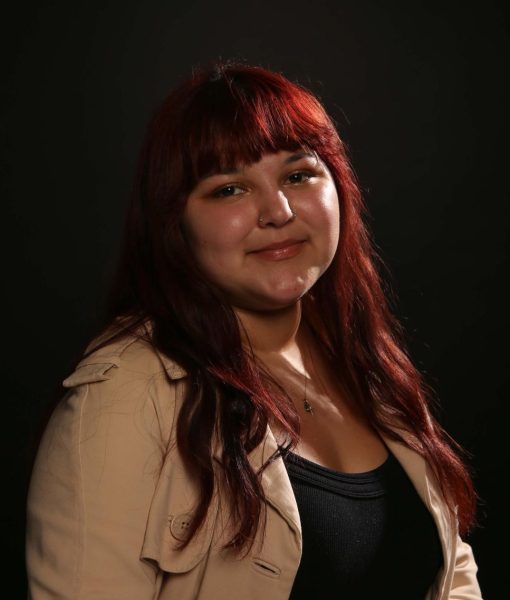
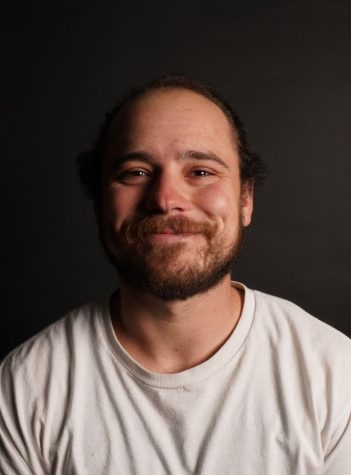
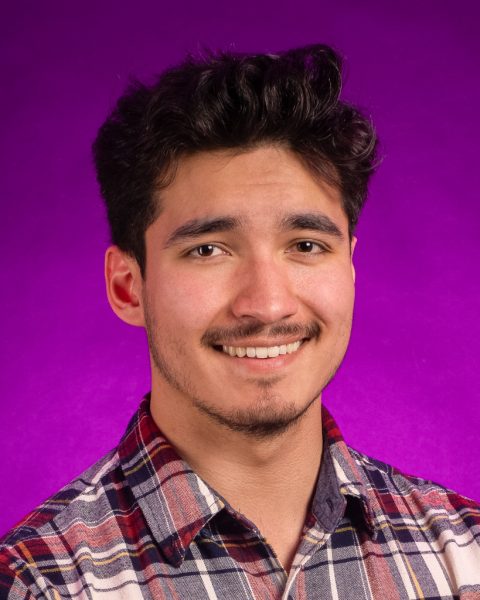

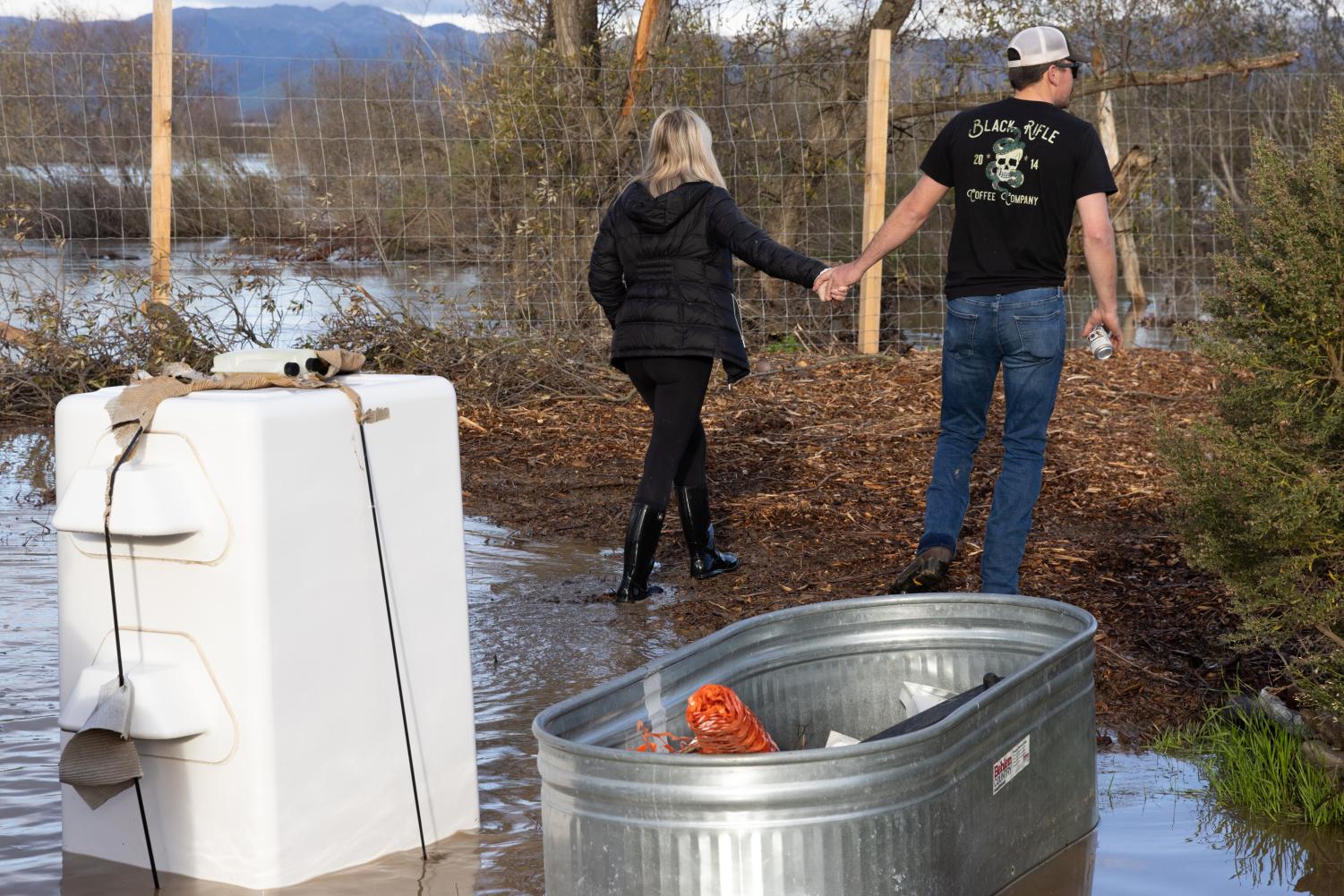

Geology professors, students and faculty share their views on the recent storms affecting the Bay Area
March 16, 2023
As an SF State student who is living on campus, I was taking my usual route home when I noticed my pathway was blocked by two trees near Thornton Hall. Next came the notifications of multiple fallen trees on campus and an email from the school warning students about high winds, keeping moisture out of living areas and not going on the pathway that most students rely on to get home.
Jennifer Gee, an SF State student since 2019, saw a photo of the fallen trees by Thornton Hall.

“I just couldn’t believe it, especially when there is yellow caution tape,” Gee said. “We should be safe.”
San Francisco has been hit with storms the last couple of days and is forecasted to have a few more before the weather starts to heat up.
“When you ask a meteorologist if they like this weather any meteorologist is gonna say yes, especially when you live here in the Bay Area and we don’t have much weather for at least four or five months of the year and no rain,” said Kevin Levey, a senior meteorology lecturer.
According to Levey, the weather was supposed to be predicted to be wet during November and December, but dry after January. However, the prediction was proved wrong as those months were also wet.
“February was actually below average, probably around about 70-80% of what we normally should get,” Levey said.
The same was said about having a dry March, but as we’ve seen in the last couple of weeks, it has been wet.
“So this happened about two weeks ago and we’ve had this inclement weather for at least 10 days now, I think today’s the 14 [day],” Levey said. “So even though it’s been this very wet period it’s not been as bad or as wet as that period we had in late December.”
In December, there was rainfall of five to six inches of rain causing San Francisco to have major street flooding.
According to Levey, the Bay has received La Nina for three years in a row, which is not common.
La Nina occurs when cold waters in the Pacific Ocean are pushed northward in the jet stream. This often causes heavy rain and flooding in the Pacific Northwest while the southern U.S. could be in a drought season.

However, with the current storms, the jet streams that usually make winter storms go from east to west are aimed further south, making the Pacific Northwest get rain.
Malori Redman, an SF State lecturer said, “We need the rain pretty badly, but the amount of rain that we’re getting in a short amount of time is concerning because our soils are already saturated, meaning they have already what they can get.”
According to Redman, we can tell how extreme a storm is going to be by how much moisture is picked up from the ocean. Moisture that is picked up by the ocean from a storm is called an atmospheric river.
According to Levey, atmospheric rivers make the rainfall more intense.
Redman said there have been recent category scales for atmospheric rivers, almost the same concept as the five hurricanes categories.
“It takes into account how long the event is likely to happen, anywhere from 24 to 48 to 72 hours as well as how much moisture is being transported from the tropical region,” Redman said.
According to Levey, these atmospheric rivers will cause problems, not only with the sea levels rising for people who live by the coast but also for people who live in low-line areas as they are prone to flooding.
“Had it been further north, we would’ve had more rain for a longer period –that could have been quite disastrous if snow below 5,000 feet had all melted and came down into the Sacramento Catchment Basin,” Levey said. “So, fortunately, I think we really — this time with this storm — dodged the bullets.”
Redman said some ways people can stay safe during storms is to plan with food and household items, limit their travel, have escape plans and make sure their car is up to maintenance. She said to prepare as if it is an earthquake.
Samantha Ferro is a broadcast electronic communication arts major at SF State who commutes.
“I usually don’t mind the rain but now the rain is too much,” Ferro said. “I know somebody got stuck somewhere in San Francisco because they couldn’t drive to the school.”
Ferro said that professors should try to understand if students can’t come to class.
“It was very hard to drive, there was a lot of water on the road so it’s not safe and you have to be extremely careful,” said Ferro.
As for SF State, Redman thinks they should check all the drains on campus before storms are predicted to hit so flooding does not happen, along with checking the trees to see if they are dying or diseased.
“This campus is so pretty, it’s what drew me to campus as a student, but we have to keep in mind with these big events that happen, those things can go very quickly,” Redman said.
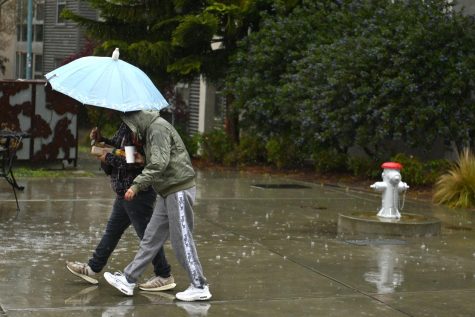
Levey’s main concern when it comes to the storms that are hitting California is the question of where the water is going to end up, as the main issues come to water managers of the dams in California.
The water managers have to predict whether they want to let out water into the ocean so it doesn’t overflood or to keep it in a dam and hope it doesn’t overflood with rainfall.
“You basically have to let out a lot of water because it’s early on in the season because in case there’s gonna be more rain later on in the season. So sometimes you can waste a lot of water,” Levey said.
Redman also thinks the water we are getting needs to be taken care of.
“I truly believe that the next major conflict that’s going to happen is going to be over water,” Redman said.
According to Redman, Las Vegas and parts of Arizona are dependent on Lake Mead and Lake Powell which have not been getting water.
“Las Vegas is a huge population and tourist attractions obviously, so if you don’t have enough water to sustain them they’re kind of fucked for all intents and purposes,” Redman said.
She also mentions that, for now, the environment will flourish and turn green, but that can be bad when it comes to summer as this could cause more wildfires as the plants die.
Redman said the best thing we can do is to adapt to the new changes that climate change is making.
“When I started teaching in 2014, it was something I said to my students that this was gonna affect their children, the next generation. But in nine years, I’m already seeing the things that I warned about in 2014,” said Levey. “It seems like we already are dealing with it now and is it gonna get worse? I can’t tell you that for sure.”



